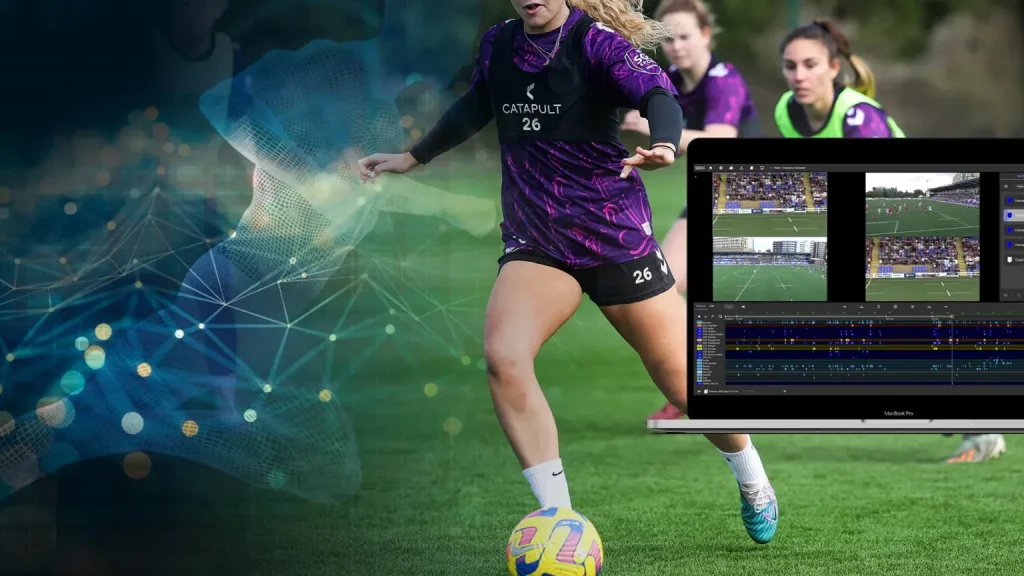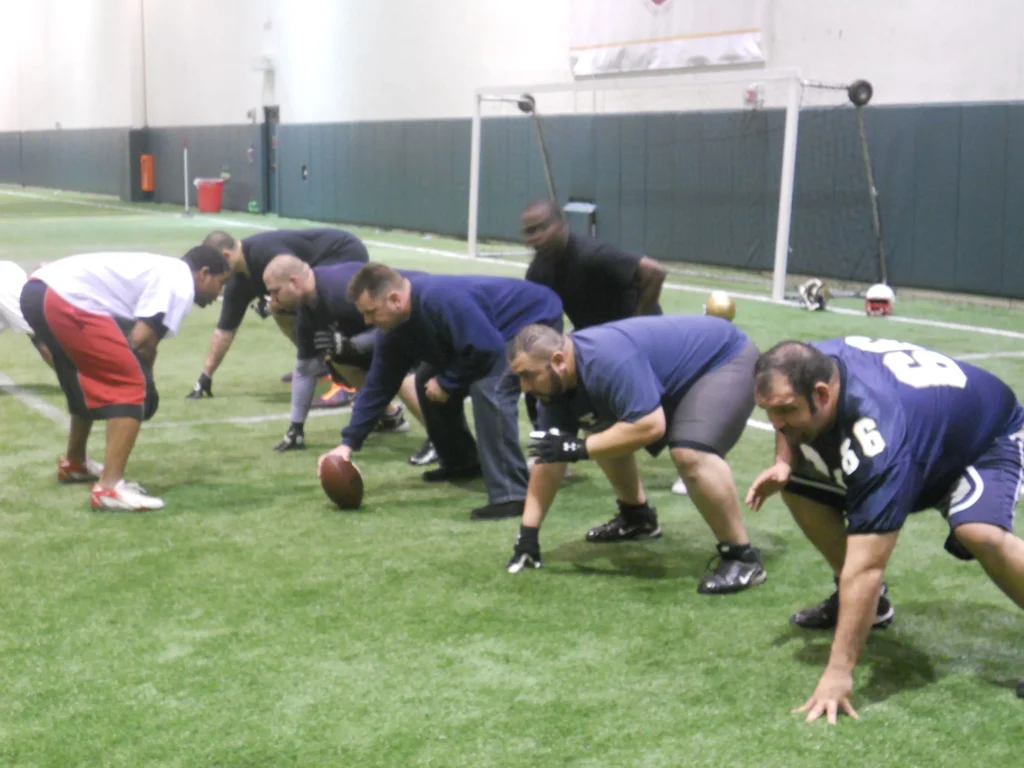Evolution of team sports strategy has been one of the most transformative journeys in athletic competition. From the early days when teams relied on scouting reports and film to the modern era of predictive analytics and data-driven coaching, the map of preparation, training, and in-game decision making has been rewritten, moving from intuition-based routines toward structured review cycles, cross-disciplinary collaboration, and continuous feedback loops that connect scouting, practice design, and game-day execution. This shift is visible in how coaches now integrate video analysis in sports with real-time data streams, enabling rapid pattern detection, post-game debriefs, and scenario planning that translate careful observation into repeatable patterns that scale across players and games. As teams chase marginal gains, the blend of qualitative insight from veteran mentors and quantitative insight from analysts has become the new normal, with sports analytics for teams, data-driven decisions in sports, and team performance analytics shaping scouting priorities, lineup construction, in-game adjustments, and long-term development plans across leagues. In short, the evolution redefines how practice, preparation, and competition are understood, measured, and refined over seasons.
In other words, this evolution signals a move from gut instinct to data-informed game planning, where teams study tempos, spacing, and possessions. Viewed through an LSI-informed lens, related concepts such as performance analytics, predictive modeling, and advanced metrics echo the same core shift toward evidence-based decision making. By framing strategy with terms like tactical optimization, player load management, and matchup-driven decision support, organizations can align coaches, analysts, and players around measurable goals.
Evolution of team sports strategy: From Film to Data-Driven Coaching
From the earliest days of scouting reports and film study, coaches relied on eye and experience to chart the path to victory. The Evolution of team sports strategy unfolded as teams recognized that human intuition, while powerful, left too much room for bias and inconsistency. The arrival of video capture and systematic breakdown methods gave teams a way to translate a complex game into repeatable observations—patterns of movement, spacing, and decision points that could be quantified and discussed.
With the data era, a new decision loop emerged: observe, quantify, hypothesize, test, learn. In practice, this meant combining qualitative insights from coaches with quantitative measures from tracking data, possession outcomes, and shot quality. The convergence of film and data created playbooks that could be tested in simulations, refined in practice, and adjusted in real time, pushing teams toward faster, more reliable marginal gains.
Video Analysis in Sports: Framing Insights for Modern Strategy
Video analysis in sports has matured from a postgame recap to a proactive performance tool, and video analysis in sports now informs both scouting and in-game decisions. It captures human elements—timing, communication, and micro-adjustments—that raw data alone might miss. Analysts annotate frames, track cues like tempo, alignment, and eye discipline, turning what happened into learnable lessons.
Coupled with metrics, video analysis guides practice design, opponent preparation, and talent evaluation. Teams create tight feedback loops: observe a scenario in video, quantify with event data, and test adjustments in controlled drills or simulated matchups. The goal is to create a shared language that blends narrative context with numerical truth.
Sports Analytics for Teams: Turning Data into Game Plans
Sports analytics for teams turns raw streams of event data, tracking data, and performance metrics into actionable game plans. Analysts quantify spacing, pace, transition timings, and shot selection to identify how to exploit matchup advantages. This approach transforms roster decisions into data-backed bets on synergy rather than subjective impressions.
With analytics, coaches test lineup designs, substitutions, and tactical configurations before they ever step onto the field. Real-time dashboards, predictive models, and scenario simulations equip staff to press tempo, defend in rotation, or adjust formations midgame, enabling faster, more precise decisions.
Data-Driven Decisions in Sports: Speed, Precision, and Adaptability
Data-driven decisions in sports accelerate learning cycles: teams can move from hypothesis to validation within days or hours rather than seasons. By formalizing what matters—possession efficiency, effective shooting windows, or defensive transition timing—coaches translate abstract ideas into concrete actions and drills.
Yet data without context can mislead. This is why governance, model validation, and cross-disciplinary collaboration are essential. Teams balance speed with careful interpretation, ensuring dashboards inform, not replace, the seasoned observations of players and coaches. The result is a decision-making culture that is both responsive and responsible.
Team Performance Analytics: Measuring Impact Across Players and Units
team performance analytics focuses on measuring impact beyond box-score heroes. Analysts segment data by players, units, and lineups to assess how combinations perform across contexts—home vs away, fast tempo vs slow, high-press vs containment. This approach reveals hidden synergies and vulnerabilities that traditional stats miss.
This granular lens guides training allocation, load management, and recruitment priorities. By tracking interactions, spacing, velocity, and decision quality, teams can optimize not only who plays but how they play together, yielding compounding gains across the season.
Ethics, AI, and Organizational Readiness in Modern Sports Strategy
As teams adopt AI and machine learning for strategy, the ethical dimension grows in importance. Data quality, privacy protections, and transparent governance guard against misuse and bias, while ensuring that analytics remain a tool to augment human judgment rather than replace it.
Organizational readiness—data-literate coaches, analysts embedded within the coaching staff, and a culture that values evidence-based decisions—becomes a strategic asset. Storytelling with data helps translate complex metrics into actionable coaching points, and safeguards are built to ensure that technology serves the sport’s integrity and the fans’ trust.
Frequently Asked Questions
How does the Evolution of team sports strategy leverage video analysis in sports to improve decision‑making?
The Evolution of team sports strategy marks the shift from intuition to evidence‑driven planning, and video analysis in sports is central to that change. By coding game footage, identifying patterns, and linking them to outcomes, coaches turn qualitative observations into repeatable practices. When paired with sports analytics for teams, video analysis helps validate insights with data and guide tactical adjustments.
What is the role of sports analytics for teams in shaping game plans within the Evolution of team sports strategy?
In the Evolution of team sports strategy, sports analytics for teams reshapes game planning by quantifying matchups, formations, and substitutions. Analysts translate on‑field observations into metrics that predict success, guiding practice design and in‑game decisions with objective evidence.
How do data‑driven decisions in sports contribute to the Evolution of team sports strategy across sports?
Data‑driven decisions in sports are a core driver of the Evolution of team sports strategy. They enable predictive models, benchmarking, and scenario planning that test ideas before changing tactics, while remaining grounded in performance data.
What is the impact of team performance analytics on coaching and lineup optimization within the Evolution of team sports strategy?
Team performance analytics provide objective evaluations of players and units, supporting decisions on selection, rotations, and development within the Evolution of team sports strategy. By tracking pace, spacing, and efficiency, teams optimize lineups and measure progress over time.
What are the key milestones from film to data in the Evolution of team sports strategy, and how does video analysis complement analytics?
A quick timeline from film to data shows the Evolution of team sports strategy: the Film Era offered qualitative insights, the Data Era introduced quantitative metrics, and the Convergence blends video analysis in sports with analytics to inform hybrid coaching. Coaches observe, quantify, hypothesize, test, and learn.
How should organizations approach ethics, data quality, and readiness when pursuing the Evolution of team sports strategy with analytics?
Implementing the Evolution of team sports strategy requires ethics, data quality, and organizational readiness. Invest in data governance, privacy protections, and transparent reporting, while embedding data literacy across staff so analytics complements—rather than replaces—coaching expertise.
| Aspect | Key Points | Examples / Details |
|---|---|---|
| Evolution Overview | Shift from film-based evaluation to data-driven decisions; integration of qualitative and quantitative insights. | Data types include event data and tracking data; use objective measurements to test and refine strategies; aim for marginal gains. |
| The Film Era | Qualitative insights and human-centered strategy; strong narrative and coaching intuition. | Coaches observed opponents, identified patterns, and shaped practice plans; but analysis was labor-intensive and prone to bias. |
| The Data Era | Objectivity, benchmarking, scenario planning, and personalization become central. | Metrics like pace, spacing, shot quality, and transition efficiency; data-driven decision making; continuous testing and iteration. |
| The Convergence | Hybrid approach that blends film with data and a structured decision framework. | Observe → Quantify → Hypothesize → Test → Learn; adoption of adaptable frameworks and data literacy across the organization. |
| Impact Across Sports | Universal principles with sport-specific nuances. | Basketball: focus on pace and spacing; Soccer/Football: emphasize transition defense and fatigue tracking; generalizable data-informed framework. |
| Practical Manifestations | Real-world applications of data-driven decisions in practice and games. | Data-driven lineup optimization; real-time decision dashboards; scouting analytics; injury prevention; tactical simulations. |
| Ethics & Organizational Readiness | Focus on data quality, governance, privacy, transparency, and a culture that values evidence-based decisions. | Balancing metrics with human judgment; building data-savvy coaching staffs and governance practices. |
| The Future | Emerging AI, personalization, and shared learnings will shape next steps. | Machine learning for pattern discovery; storytelling with data; ethical considerations and continued emphasis on data literacy. |
Summary
Evolution of team sports strategy has evolved from film to data and beyond, amplifying the human element rather than diminishing it. This journey reveals how coaches blend qualitative intuition with quantitative evidence to create adaptable systems that guide lineups, tactics, and in-game decisions. As technology advances, AI and advanced analytics will augment decision making, but the best teams will preserve context, purpose, and ethical standards while translating complex metrics into clear coaching points. The ongoing evolution will shape training, competition, and the fan experience, reinforcing that smarter strategy, better decisions, and a more engaging game depend on the harmonious integration of storytelling and data.


